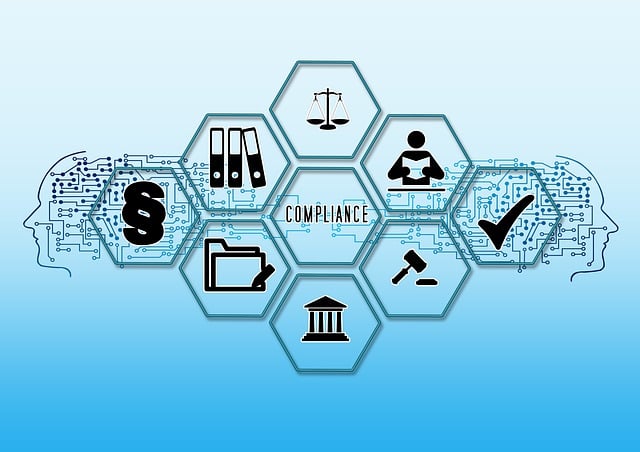Understanding and implementing Select DOT Compliance is crucial for transport and logistics businesses to ensure safety, efficiency, and accountability. It involves adhering to Department of Transportation (DOT) regulations on driver hours, vehicle maintenance, and hazardous materials handling. Key strategies include embracing advanced safety tech like ADAS and ELDs, fortifying supply chain security through thorough vetting and tracking systems, providing comprehensive DOT compliance training, staying updated on regulatory changes, and integrating fleet management software for automated tasks and real-time reporting. Industry associations offer resources to aid in selecting suitable compliance solutions, helping businesses stay ahead of regulations while optimizing shipping operations.
“Unraveling the complexities of DOT regulations is essential for any industry involved in transportation. This comprehensive guide offers expert insights on navigating these vital rules, ensuring your business remains compliant. From understanding the key components of select DOT compliance to identifying common mistakes, we provide a roadmap for success. Discover best practices, valuable resources, and tools tailored to streamline adherence. Master the art of Select DOT Compliance and stay ahead in this stringent regulatory landscape.”
- Understanding DOT Regulations: An Overview
- Key Components of Select DOT Compliance
- Best Practices for Staying Compliant
- Common Mistakes to Avoid During DOT Compliance Checks
- Resources and Tools for Efficient DOT Regulation Adherence
Understanding DOT Regulations: An Overview

Understanding DOT regulations is crucial for any business involved in transport and logistics, especially when navigating the complex landscape of international dot transportation rules. These regulations, enforced by the Department of Transportation (DOT), are designed to ensure safety, efficiency, and accountability across various modes of transportation, from trucks and buses to pipelines and mass transit systems. Compliance with DOT standards is not just a legal requirement but also a key factor in maintaining operational integrity and reputational health.
Select DOT compliance involves a deep understanding of laws pertaining to driver hours of service, vehicle maintenance, hazardous materials shipment, and more. It requires the implementation of robust transportation safety technology and efficient fleet management software solutions. By adhering to these regulations, businesses can foster a culture of safety, reduce operational risks, and capitalize on opportunities for continuous improvement.
Key Components of Select DOT Compliance

The key components of successful Select DOT compliance lie in understanding and implementing stringent safety standards within the freight transport industry. Firstly, this involves staying abreast of evolving transportation safety technology, ensuring that vehicles and their operations meet the latest regulatory benchmarks. By integrating cutting-edge safety features such as advanced driver assistance systems (ADAS) and electronic logging devices (ELDs), carriers can significantly enhance road safety and operational efficiency.
Secondly, securing supply chain security measures is paramount. This encompasses a multi-faceted approach, from vetting carriers and drivers to implementing robust tracking and communication systems. By prioritizing these best practices, businesses not only ensure compliance with DOT regulations but also mitigate risks, fostering a culture of accountability and reliability within the freight transport industry.
Best Practices for Staying Compliant

Staying compliant with Department of Transportation (DOT) regulations is paramount for businesses in the freight transport industry. One of the best practices to ensure DOT compliance is implementing a robust and ongoing training program, such as specialized DOT compliance training for all employees, including truck drivers. This training should cover essential topics like physical and mental health requirements, drug and alcohol testing procedures, record-keeping protocols, and safety standards specific to the sector. Regular updates on regulatory changes are also crucial, as the DOT frequently modifies rules to enhance safety and maintain the high standards expected in this industry.
Additionally, establishing clear internal policies and procedures can significantly aid in DOT compliance. This includes defining roles and responsibilities for each employee involved in the transport process, creating accessible record-keeping systems, and promoting a culture of openness where employees feel comfortable raising concerns or reporting violations without fear of retaliation. Integrating these best practices into day-to-day operations fosters a compliant environment, ensuring that businesses not only meet but exceed DOT standards, ultimately contributing to the safety and efficiency of the freight transport industry.
Common Mistakes to Avoid During DOT Compliance Checks

When navigating DOT (Department of Transportation) compliance checks, several common pitfalls can trip up even the best-prepared companies. One of the biggest mistakes is overlooking minor details, such as outdated documentation or incorrect labeling. These seemingly small issues can lead to significant penalties and disruptions in international trade. It’s crucial to invest in regular international trade compliance training to ensure your team stays informed about evolving regulations, especially with frequent updates in the trucking industry’s safety standards.
Another blunder is failing to maintain accurate records, which are vital for demonstrating compliance during inspections. Ensuring every document is up-to-date and readily accessible can save precious time and prevent costly mistakes. Moreover, ignoring safety regulations specifically designed for the trucking industry can lead to serious consequences, emphasizing the need for comprehensive training that covers both how to stay DOT compliant and the latest safety regulations for the trucking industry.
Resources and Tools for Efficient DOT Regulation Adherence

Staying compliant with DOT regulations can be streamlined by leveraging the right resources and tools. One such solution is utilizing fleet management software designed specifically for transportation and logistics compliance. These cutting-edge platforms offer comprehensive features like driver tracking, vehicle maintenance scheduling, and real-time reporting to simplify adherence to ever-changing DOT rules. By integrating these technologies into daily operations, businesses can automate time-consuming tasks, reduce human error, and foster a culture of safety and accountability among their fleets.
Additionally, industry associations and government agencies provide valuable resources for selecting DOT compliance solutions. Their comprehensive guides, webinars, and workshops equip companies with the knowledge to make informed decisions when choosing software or hardware that align with their specific needs. Embracing these tools allows businesses to stay ahead of regulatory changes, ensuring they remain compliant while optimizing their shipping and logistics operations through effective transportation safety technology implementation.
Expert guidance on select DOT compliance is essential for ensuring safe, legal, and efficient operations in today’s regulated environment. By understanding key regulations, implementing best practices, and leveraging available resources, businesses can streamline their processes and avoid costly mistakes. Stay informed, stay compliant, and leverage the benefits of expert knowledge to maximize efficiency and safety across your DOT-regulated activities.
